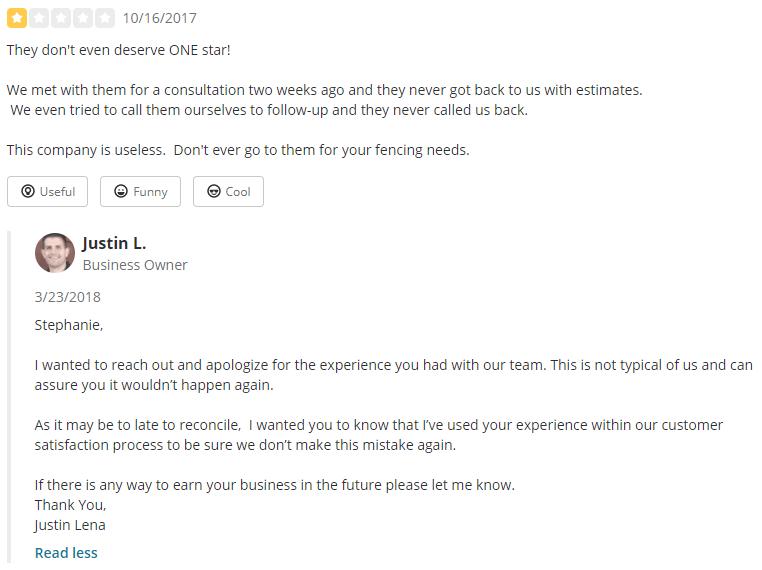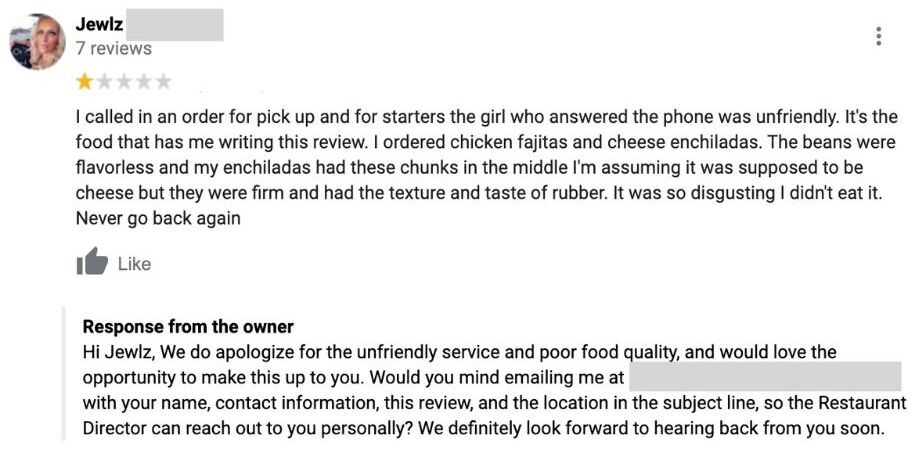In our interconnected, digital-driven world, a single click can lead potential customers to a sea of reviews about your business. A shining star or a less-than-stellar remark can hold immense sway in their decision-making process. So what are the pitfalls of negative reviews?
While we’d all love to bask in the glow of positive feedback, the reality is that every business, no matter how diligent, will face negative reviews at some point. However, the silver lining is that it’s not the criticism itself, but our response to it, that can leave a lasting impression.
Armed with the right approach, a negative review can be transformed into a powerful demonstration of your brand’s integrity and commitment to customer satisfaction.
In this guide, we’ll explore seven real-life examples of how businesses have tackled negative reviews, coupled with three handy templates for when you need to craft the perfect response.
Let’s dive into the art of turning lemons into lemonade!
Steps to Respond to Negative Reviews
1. Appreciate and Acknowledge
Negative Review
“The product I received was damaged, and this is not what I expected from a brand like yours.”
Response to Negative Reviews
“Thank you for bringing this to our attention. We apologize for the inconvenience you’ve experienced. Please reach out to our customer service so we can rectify this immediately.”
Takeaway
Expressing gratitude publicly demonstrates accountability and shows potential customers that you prioritize satisfaction. Acknowledging the issue swiftly prevents escalation and reassures the reviewer (and others reading the response) that you’re committed to resolving problems. Avoid generic phrases like “We’re sorry you feel that way,” which can come across as insincere. Instead, focus on empathy and action.

2. Personalize the Response
Negative Review
“I found the staff at your downtown branch very unhelpful.”
Response to Negative Reviews
“Hi [Reviewer’s Name], we’re genuinely sorry to hear about your experience at our downtown branch. Please know this isn’t the standard we strive for. We’d appreciate more details to address this issue properly.”
Takeaway
Using the customer’s name and tailoring your response humanizes the interaction. It signals that you’re not using a copy-paste template and care about their specific issue. Ask for additional details privately to avoid airing sensitive information publicly. This approach can transform a disgruntled customer into a loyal advocate by making them feel valued.

3. Be Proactive and Offer Solutions
Negative Review
“The app keeps crashing every time I try to make a payment.”
Response to Negative Reviews
“We’re sorry for the trouble. Our tech team is already investigating this issue. In the meantime, you can use our website for transactions. We appreciate your patience.”
Takeaway
Proactivity reassures customers that their feedback is being acted upon. Offering an immediate workaround (e.g., directing them to a functional platform) mitigates frustration while you resolve the root cause. Highlighting that your team is “already investigating” builds confidence in your responsiveness.

4. Remain Professional and Neutral
Negative Review
“Your prices are outrageous! I can’t believe I wasted my money here.”
Response to Negative Reviews
“We understand your concerns about pricing. Our rates are based on the quality and value we provide. However, we do offer seasonal promotions and discounts. We hope you’ll consider us again in the future.”
Takeaway
Avoid defensiveness or emotional language. Instead, calmly explain your value proposition while leaving the door open for future engagement. This demonstrates maturity and helps de-escalate tension. For emotionally charged reviews, stick to facts and avoid arguments—your professionalism will resonate with other readers.

5. Encourage Offline Conversations
Negative Review
“My order was delayed, and no one provided any updates.”
Response to Negative Reviews
“We sincerely apologize for the oversight. We’d like to understand and resolve this better. Please contact our support team at [email address] so we can assist you directly.”
Takeaway
Complex issues (e.g., billing disputes, delivery problems) are best resolved privately. Moving the conversation offline protects customer privacy and allows for detailed troubleshooting. Always follow up promptly after redirecting them to ensure the issue is resolved.

6. Show Empathy
Negative Review
“I had a reservation, but still had to wait 30 minutes.”
Response to Negative Reviews
“We apologize for the wait, and we understand how valuable your time is. We’ll review our reservation process to ensure this doesn’t happen again.”
Takeaway
Empathy validates the customer’s feelings and fosters goodwill. Phrases like “We understand how frustrating this must be” or “Your time matters to us” build emotional connections. Pair this with a commitment to improvement to show you’re invested in their experience.
7. Take Responsibility
Negative Review
“The information on your website is misleading.”
Response to Negative Reviews
“We apologize for any confusion. We’re currently updating our content for clarity. Thank you for pointing it out.”
Takeaway
Owning mistakes builds credibility and shows a commitment to improvement. Avoid deflecting blame (e.g., “This was due to a third-party error”). Instead, focus on accountability and concrete steps to prevent recurrence. Transparency fosters trust and can turn critics into brand advocates.
Additional Best Practices to Respond to Negative Reviews
- Monitor Reviews Regularly: Use tools to track feedback across platforms and respond promptly (ideally within 24–48 hours).
- Train Your Team: Ensure staff handling reviews understand brand voice, empathy, and problem-solving protocols.
- Follow Up: After resolving an issue, ask the customer to update their review or share their improved experience.
- Learn from Feedback: Analyze recurring complaints to identify systemic issues (e.g., product flaws, training gaps).
3 Templates to Adopt on How to Respond to Negative Reviews
The Appreciative Approach
“Thank you for sharing your feedback, [Reviewer’s Name]. We’re sorry for any inconvenience caused. We take all comments seriously and will work on improving [specific concern]. We value your business and hope for another chance to serve you better.”
The Direct Problem-Solving Approach
“Hello [Reviewer’s Name], we apologize for the issue you faced. Please provide us with more details at [email/contact number], and we’ll address it promptly. We’re committed to making things right.”
The Assurance Approach
“We’re truly sorry to hear about your experience, [Reviewer’s Name]. We strive to provide the best for our customers and clearly missed the mark this time. Rest assured, we’ll investigate and ensure it doesn’t recur.”
Wrapping Up on Negative Reviews
In conclusion, the way a business chooses to handle negative reviews can make or break its reputation. Addressing feedback with professionalism, empathy, and proactivity can turn unhappy customers into loyal ones and also reflect positively on your brand for potential clients. Remember, it’s not just about countering the negative but leveraging it as an opportunity for growth and improvement.
Voice of customer analytics can help mitigate such issues by understanding consumer reviews and working on them proactively. Find out more about VoC analytics here.







